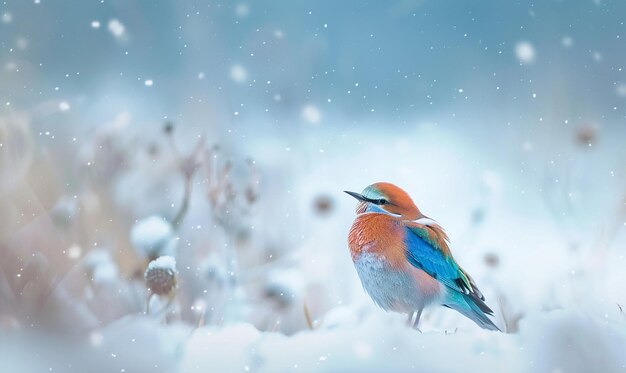Winterwatch For Beginners: A Step-by-Step Guide

Table of Contents
Essential Equipment for Winter Wildlife Watching
Successfully enjoying winter wildlife watching requires the right gear. Staying warm and comfortable is key to a pleasant and productive experience. Let's explore the essential equipment:
Clothing: Layering Up for Success
Staying warm and dry is crucial for winter wildlife watching. Invest in a layering system to regulate your body temperature effectively. This typically involves three layers:
- Base Layer: Thermal underwear made of merino wool or synthetic materials will wick away moisture, keeping you dry and warm.
- Mid-Layer: An insulated fleece jacket or sweater provides additional warmth.
- Outer Layer: A waterproof and windproof jacket and trousers are essential for protection against the elements.
Essential items also include:
- Waterproof boots with good grip.
- A warm hat that covers your ears.
- Waterproof gloves.
- A warm scarf to protect your neck.
Consider bringing hand and foot warmers for extra warmth on exceptionally cold days.
Optics: Your Window to the Wild
Binoculars are indispensable for winter wildlife watching, allowing you to observe animals from a safe distance without disturbing them. For beginners, prioritize ease of use and image quality over advanced features.
- Types of Binoculars: 8x42 or 10x42 binoculars offer a good balance of magnification and field of view, making them suitable for most winter wildlife watching situations.
- Tips for Choosing: Consider the size and weight of the binoculars, ensuring they are comfortable to hold for extended periods. The field of view (how much you can see) is also important. A wider field of view is helpful for locating wildlife.
A spotting scope can be a valuable addition for observing animals at longer distances, though it's not essential for beginners.
Other Essentials: Completing Your Kit
A well-equipped backpack is vital for carrying your gear comfortably. Don't forget these essentials:
- A field guide specific to your location, to help identify the birds and other wildlife you spot.
- A notebook and pen to record your sightings – including species, location, date, and time. This will help you track your winter wildlife observations over time.
- Snacks and water to maintain your energy levels throughout your winterwatch session.
Consider bringing a thermos of hot chocolate or tea to stay warm and energized, especially during longer outings. A camera with a telephoto lens can be a great addition if you enjoy photography.
Choosing the Right Location and Time for Winterwatch
Successful winter wildlife watching involves selecting the right location and timing your visit.
Finding Suitable Habitats
Research local parks, nature reserves, and wetlands known for winter wildlife. Look for areas that provide shelter and food sources for animals:
- Woodlands: Offer protection from the elements and provide foraging opportunities.
- Hedgerows: Provide cover and food for many species.
- Feeding Stations: These can attract a variety of birds, especially during the winter months.
Research resources such as local wildlife trusts and nature reserve websites can provide valuable information on suitable locations and species to look out for. Look for areas with water sources, as these attract birds and other animals during winter.
Timing Your Visits
The best time for winter wildlife spotting is often during the morning and late afternoon when animals are most active.
- Sunrise and Sunset: Offer excellent lighting conditions for photography, though remember to dress warmly in anticipation of lower temperatures.
- Avoid Peak Tourist Times: Visiting during off-peak hours allows for a more peaceful and potentially more rewarding winterwatch experience.
Always check weather forecasts before heading out, and dress appropriately for the conditions.
Identifying Winter Wildlife – Birds and Beyond
Learning to identify common winter wildlife is a rewarding aspect of winterwatch.
Common Winter Birds
Familiarize yourself with common winter bird species in your region using field guides, online resources, or bird identification apps. Focus on learning to recognize:
- Their physical characteristics (size, shape, plumage).
- Their calls and songs.
- Their preferred habitats.
Practice your identification skills regularly to improve your ability to spot and identify different species.
Other Winter Wildlife
Winterwatch extends beyond birds! Many mammals, amphibians, and reptiles remain active during winter, depending on your location. Look out for:
- Mammals: Foxes, deer, rabbits, and badgers.
- Amphibians and Reptiles: (Depending on your location and climate) Some may hibernate, while others remain active.
Remember that some animals are more elusive than others. Patience and keen observation are key to successful winter wildlife spotting.
Ethical Winterwatch Practices
Responsible and ethical behaviour is crucial when engaging in winter wildlife watching.
Minimizing Disturbance
Always keep a safe distance from wildlife and avoid making loud noises. Never approach or attempt to feed animals, as this can disrupt their natural behaviour and potentially harm them.
- Respect wildlife's space and natural behaviours.
- Leave no trace – take all your rubbish home with you.
Protecting Your Safety
Be aware of weather conditions and potential hazards during your winterwatch excursions.
- Dress appropriately for the weather.
- Check weather forecasts before you go.
- Let someone know your plans, including your intended location and return time.
- Be mindful of potential hazards such as slippery paths or icy conditions.
Prioritise your safety and enjoy the experience responsibly.
Conclusion
Winterwatch for beginners can be an incredibly rewarding experience. By following these steps and embracing ethical practices, you can discover the beauty and wonder of the natural world during the winter months. From identifying common winter birds to observing other wildlife, the possibilities are endless! So, grab your binoculars, bundle up warmly, and embark on your Winterwatch adventure today! Remember to share your winter wildlife spotting experiences with others – happy Winterwatching!

Featured Posts
-
 Controversy Erupts Tory Lanez And 50 Cent Confront Reporter Over A Ap Rocky Wager
May 13, 2025
Controversy Erupts Tory Lanez And 50 Cent Confront Reporter Over A Ap Rocky Wager
May 13, 2025 -
 Prekmurski Romi In Njihova Muzikalna Dediscina Muzikanti Skozi Cas
May 13, 2025
Prekmurski Romi In Njihova Muzikalna Dediscina Muzikanti Skozi Cas
May 13, 2025 -
 Tory Lanez Attacks Lawyer During Megan Thee Stallion Trial
May 13, 2025
Tory Lanez Attacks Lawyer During Megan Thee Stallion Trial
May 13, 2025 -
 Winterwatch A Guide To Birdwatching In Winter
May 13, 2025
Winterwatch A Guide To Birdwatching In Winter
May 13, 2025 -
 Spoznajmo Romske Muzikante Prekmurja Tradicija In Sodobnost
May 13, 2025
Spoznajmo Romske Muzikante Prekmurja Tradicija In Sodobnost
May 13, 2025
